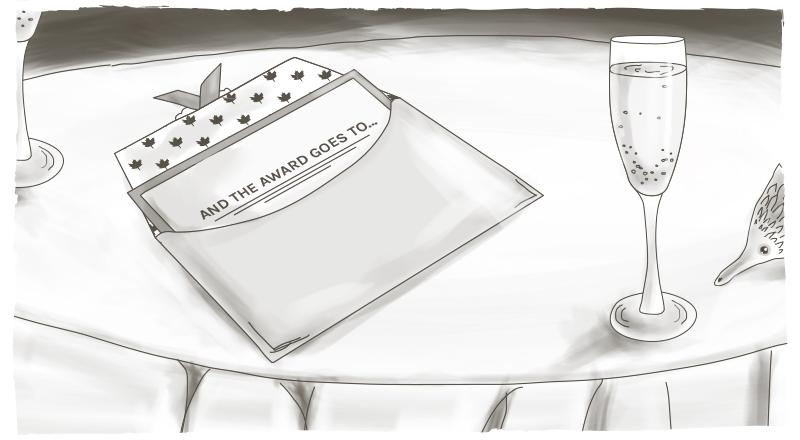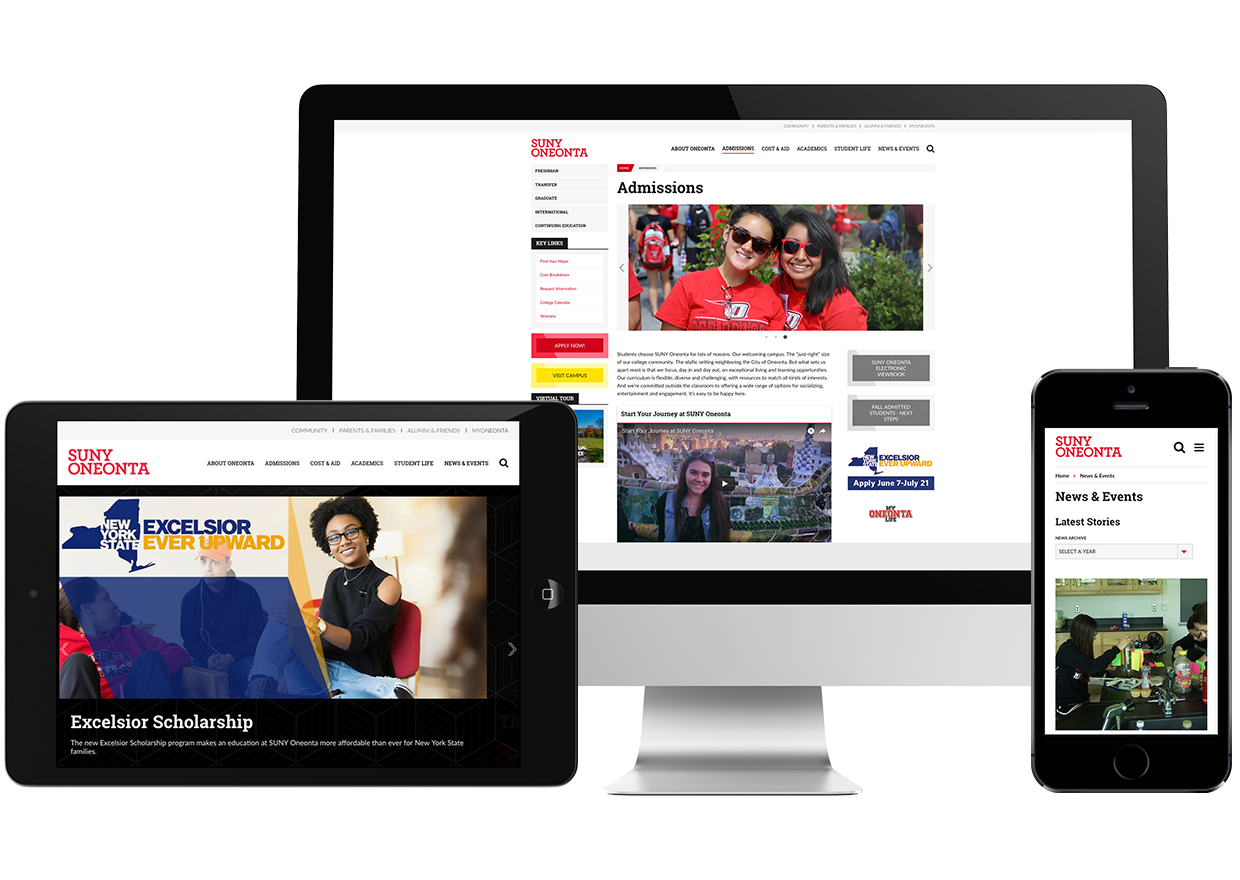An Engaging Site Leads to an Award Nomination

Earlier this week, Digital Echidna was named a finalist in the 2017 Acquia Engage Awards for its work on the SUNY Oneonta website. In total, over 200 submissions were received from Acquia customers and partners competing for awards across 17 different categories. And higher education, where Digital Echidna is one of six finalists, was the most competitive category with over 40 submissions..
To advance to the final round, nominations had to demonstrate an advanced level of visual design, functionality, integration, and overall experience. From there an outside panel of experts will select the winning projects. As we await the October conference where the winner will be announced, we wanted to share with you some highlights from our award submission piece.
SUNY Oneonta: A Case StudY
SUNY Oneonta first came to us with a public-facing site operating on the base of a Drupal 7 installation. The site was highly customized with several uniquely designed modules and database structures. It was this customization that eventually made it difficult for the school to scale and add site enhancements. In addition to making it difficult to make changes via the Drupal interface, the customization created an architecture that resulted in severe performance issues, causing frequent service interruptions.
There are two lessons to share from this project.
- Too much customization and breaking from best practices - even Drupal - can cripple a CMS.
- A good RFP is vital to the success of a project.
Many of SUNY Oneonta’s strategic priorities revolve around student recruitment. Because the college’s website is its biggest recruitment tool, service interruptions, downtime and the inability to migrate key pages into the responsive Drupal environment hampered the college’s recruitment efforts. Following a recommendation from the Drupal development firm Mediacurrent, SUNY Oneonta moved to Acquia Cloud. Though this did help to create a more stable environment, the move failed to address the underlying architectural limitations manifested within Drupal itself.
The good thing for us, is that SUNY Oneonta was Drupal savvy. They recognized that for all the issues they had, the problem was not in the Drupal CMS platform but in its current execution.
Mediacurrent played a foundational role by working with SUNY Oneonta to write the functional spec that was included in the RFP. It was this RFP to which Digital Echidna responded. Even though over the course of the project adjustments were made and we still needed to do some discovery, the energy and money they spent on the RFP clearly served them well. The project was ahead of the game from the get go with clear objectives, a realistic timeline, a fair budget, and a defined scope.
With SUNY Oneonta’s primary goal clearly articulated in the RFP, supporting goals for this migration and redesign project were easier to define. Echidna was able to set a pace and goals that included:
- Retaining a Drupal 7 website design with some enhancements and modifications;
- Upgrading to a functional responsive design with the concept of mobile first as a guiding principle;
- Retaining the majority of the Drupal 7 navigation structure with some editorially controlled enhancements and modifications;
- Configuring and developing a website that has no or very little down time;
- Increasing flexibility through a templated and structured approach, allowing for future enhancements and changes to the website content and structure;
- Improving the workflow, user experience, and underlying architecture;
- Broadening the visitor base by providing improvements in translatability and accessibility; and
- Launching five months from the date when the contract was awarded.
Finally, without getting too technical, Echidna:
- Kept within budget by retaining SUNY Oneonta's existing brand and general site design but with enhancements and modifications to workflow in order to accommodate today’s higher education UI/UX expectations. This included a redesigned/modernized homepage -- panels, top carousel properly displays photos on all devices, profiles and fast facts are views (fast facts have pagination), flyout menu on right.
- Updated colours and (Google) fonts to align with SUNY Oneonta’s style guide.
- Provided a templated and structured approach increased flexibility to allow for future enhancements and changes to the website content and structure.
- Reduced the number of content types from 21 to 10, and the number of nodes from 3,000 to fewer than 1,100.
- Reduced the redundancy of template files functionality by moving approximately three-dozen custom modules storing content associated with specific nodes in custom database tables which output content directly into over 50 custom templates via SQL, to nodes or blocks as appropriate.
- Used views and other standard Drupal implementation methods for lists of items and featured content.
- Purged a substantial amount of test content (and some published content) prior to migration.
- Delivered an accessible product, as governed by Federal Section 508 Standards and New York State Policy NYS-P08- 005, by building the site to W3C and Drupal 8 standards.
- Upgraded to a fully functional (Note: Drupal 7 was responsive, but menus, etc. never functioned correctly on other devices) responsive design with the concept of mobile first as a guiding principle. The site is now fully responsive, displaying appropriately on smartphones, tablets, desktop, and for printing.

Faster, better search results, and on-point informative content is what a site user notices. Secondly to this, broadening the visitor base by making improvements in translatability and accessibility were key goals of this project and Digital Echidna achieved this by adhering to Drupal 8 best practices. SUNY Oneonta site administrators have realized an improved Drupal interface with access to better backend processes and code.
With a migration from Drupal 7 to 8 and adhering to standards in architecture, coding, and theming, SUNY Oneonta has ensured flexibility and scalability of its site and made for an easier path for Drupal CMS training.
The website has been well received by both its internal and external test audiences. The delivered solution supports the college’s branding efforts, allows for quick and intuitive access to important content, and has been embraced in anticipation that prospective students will see this new web presence as representative of a forward-thinking, progressive, post-secondary institution.
Wish us luck for October!
What is a good case study of higher ed and drupal 8?
SUBSCRIBE TO OUR E-NEWSLETTER
 Subscribe
Subscribe


